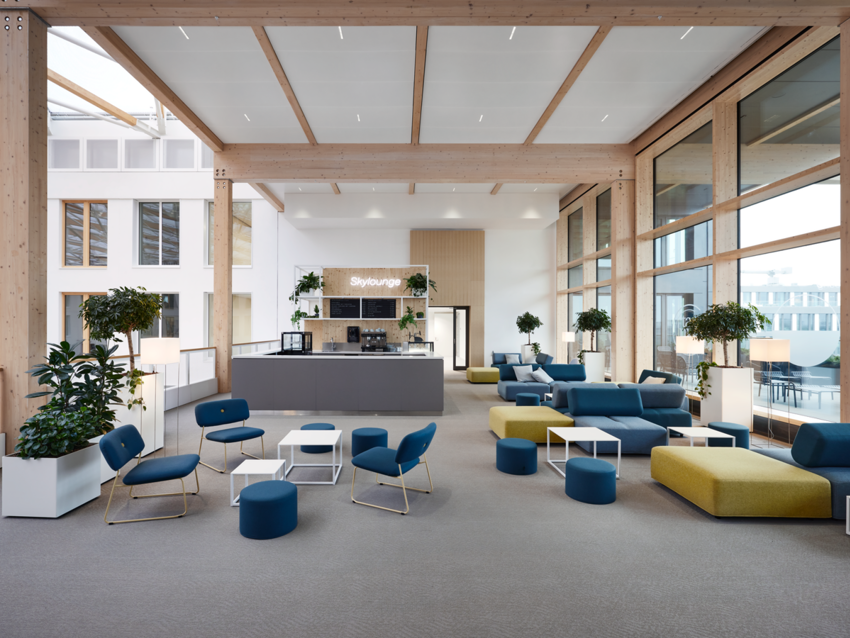Energy mass storage
Energy efficiency is known as using less energy to get the same output. Free cooling is known as utilising the colder outdoor temperatures at night as a natural source for cooling, hence no necessity for the chiller to use additional energy. These two, energy efficiency and free cooling, are essential outcomes of using the potential of energy mass storage. Making use of a building mass to store energy until the night, makes it possible to take advantage of both while not making compromises with the indoor climate.
To construct energy efficient buildings
Thermal management of the perimeters of a room can play an important role in regards to how energy efficient the operation of a building turns out to be. One way to build energy efficient buildings is to use materials with high building mass, for instance apply a design with concrete ceilings.
Think about Passive houses for instance, they are built according to a very compact construction method to make the building cope with cold and hot temperatures without the immediate necessity to heat or cool when the weather changes. To construct energy efficient buildings and realise less compact floor plans, multiple “house bodies” or designs with large windows, construction materials with great heat capacity has to be used.
The choice of materials affects a building’s ability to store and release energy to/from its construction, to/from its building mass. An easy example is a house built with a concrete structure contra a house built in wood, the indoor temperatures differ vastly between the two on a hot summer day. The house built in concrete has high heat capacity and can absorb a lot of heat energy while the wooden building cannot.
Energy mass storage
Energy is released or stored when there is a temperature difference between the concrete construction and the indoor environment. When the indoor environment is hot, it buffers the room temperature and decreases the need for energy from other sources to ensure a comfortable indoor temperature.
As soon the concrete is warm, the energy stored can be released into the indoor environment. However, the natural air movements in a room are not enough to make full use of the energy potential in the construction. To increase the exchange of energy with the room, and minimise the need for additional sources, it’s necessary to increase the air movement along the concrete surface, or to larger the exchange of energy by radiation. Further, hydronic solutions for concrete activation or in-room heat exchangers can be used to draw the energy out of the mass.
Heat capacity
So, all bodies have thermal inertia, or heat capacity. In addition to the thermal coefficient* (c) of each substance, or mixture of substances, the degree of conversion of energy (Q) into heat (T) is also composed of the mass (m) of a body. With the equation at hand, it becomes evident that bodies of high mass heat up less than those with low mass, although the same energy input.
The mass of buildings today increases continuously, this in order to handle short hot spells or cold snaps without facing a need for additional indoor climate control or utilisation of extra energy sources. Very solidly constructed buildings tend to remain at a stable temperature despite seasonal variations, think about old churches as an example.
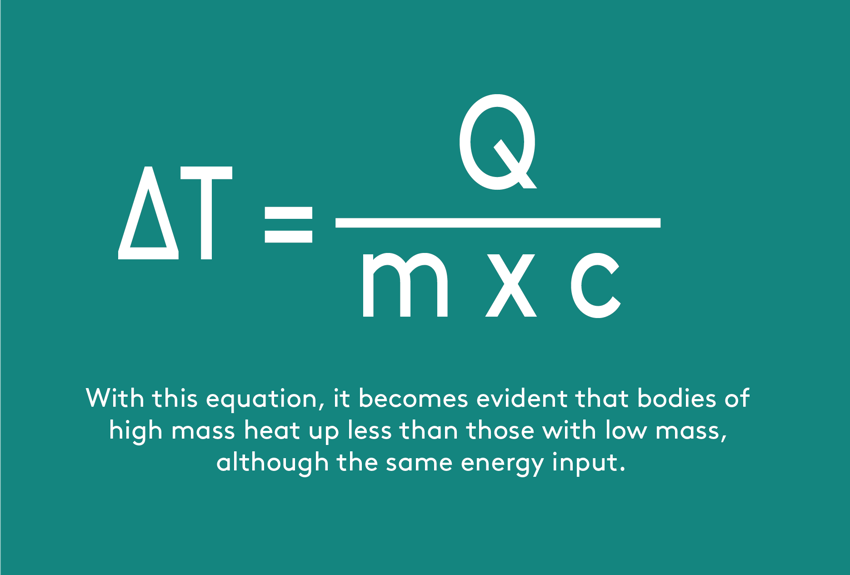
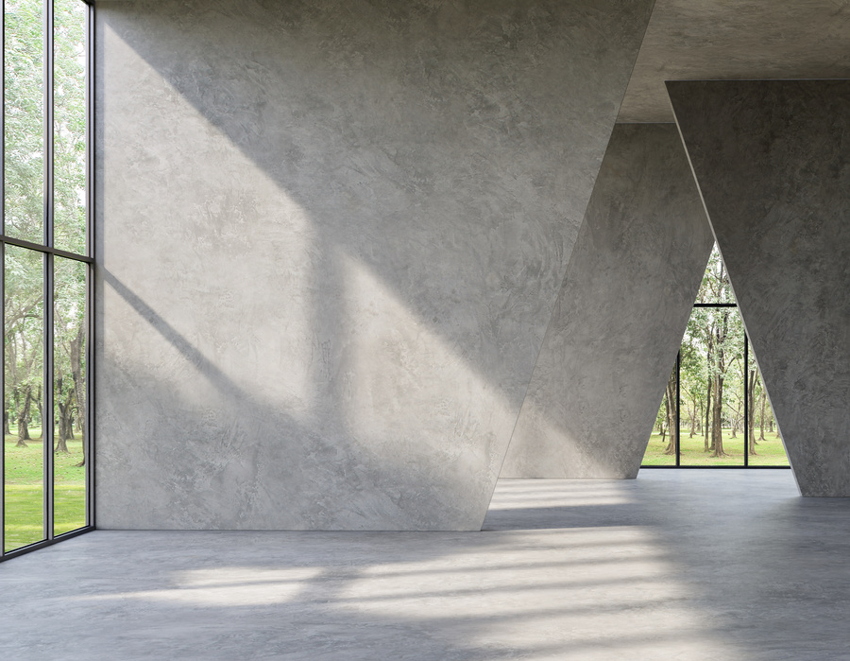
Energy released to the room
It was explained that the energy in the concrete structure can be released to the indoor environment when the indoor temperature differs from the temperature of the concrete. It is in the opposite way important to know that a proportion of the energy in a room is passed into the concrete construction as soon as the mass is warmer or colder than the room temperature. The proportion of absorbed energy can be increased by pre-tempering the concrete. To exemplify, a concrete ceiling can be cooled at night when the cost of energy is low, or when cooling may be performed in a free cooling mode, which then increases the concrete’s capacity to store heat during the day when the indoor environment heats up.
But for this to occur, the concrete structure cannot be disconnected from the room, for example will mineral wool mats on the ceiling negatively affect the effect of the energy mass storage. Further, it is worth to recognise that the room temperature fluctuates, normally within a certain range over the course of the day. For instance from about 20 °C in the early office hours to a maximum of 25 °C during the day. The absorption of energy will therefore differ throughout the day.
There are different products on the market to utilise the principle of energy mass storage. We will introduce four below and mention the most prominent advantages and/or disadvantages with each.
Mass connection via water pipes
Mass connection via water pipes is when a product is in direct connection with the concrete ceiling. This by the means of its water pipes. This method allows for the concrete to be cooled or heated efficiently, thanks to the direct connection between pipes and concrete. The adverse effect of this method is the cooling capacity of the product, since it is mounted directly on the ceiling it does not allow for the room air to come in contact with the concrete which otherwise can allow for additional cooling.
The water flows in series into the pipe and through the ceiling product, and in a heating mode it heats the concrete as well as the room. If there is a heating requirement when the room is empty and/or the heat load is limited, perhaps on a cloudy day, then there is a risk of overheating when it gets crowded, or the sun comes out. This because the concrete ceiling has limited capacity to absorb more heat energy. However, since most buildings are operated with reduced room temperature at night, there is normally capacity for the concrete to store heat from the crowded or heated room.
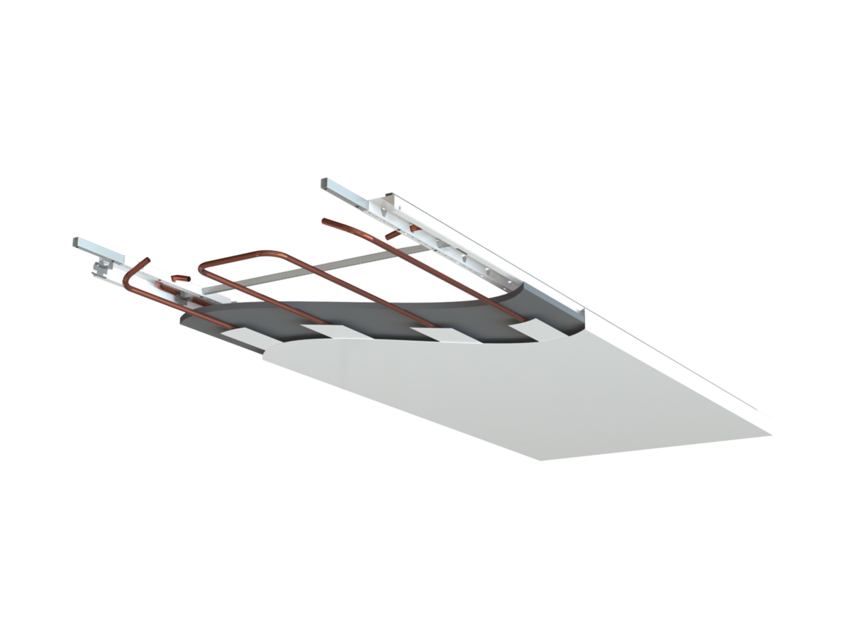
Mass connection via concrete core tempering
Concrete core tempering is perhaps the easiest example of mass connection as it only involves water pipes which are embedded in the concrete ceiling at the time of construction. The water pipes and the concrete building structure is then in direct connection and energy can be easily exchanged with the concrete structure.
This method effectively prevents overheating, but it allows for significantly lower cooling and heating capacities compared to the mentioned methods using ceiling products. Further, the time from change in load in the room to a noticeable response in the indoor climate is much delayed as the energy must pass through the entire mass of concrete before making any effect on the indoor climate. This technique is also inflexible in terms of placement of lights, sprinklers and sound absorption panels on the ceiling.
Mass connection via radiation
Another type of mass connection is the one based on the method of radiation. The climate ceiling product is then mounted with a distance to the concrete ceiling and the radiation of hot or cool energy allow for mass storage in the concrete ceiling. However, with the space in between the elements the effect of mass connection becomes fairly limited.
Mass connection via air
The air flow in the room is in this method of mass connection guided between the concrete ceiling and the ceiling product which is mounted with a distance to the ceiling. When the air is guided through the “gap” during the day, the warm room air is cooled both by the colder concrete and the cooling ceiling product. The air comes through with quite high air speed which gives a higher heat transmission coefficient and large absorption of heat energy into the concrete.
Generally, the supply air flow is reduced or switched off during night. The energy accumulated in the concrete ceiling during the day is during night drawn into the room via convection and radiation. For this to give maximum effect, no mineral wool mats or similar must be used on the ceiling. It is also important to be aware that different air flow patterns give different effects of this method. It is preferred to have an evenly distributed air flow over the entire ceiling surface as well as air movement from the warmer façade towards the corridor/hallway zone. The direction of the supply air flow is recommended to follow the natural air movement in the room to amplify the energy mass storage effect and at the same time avoid draught.
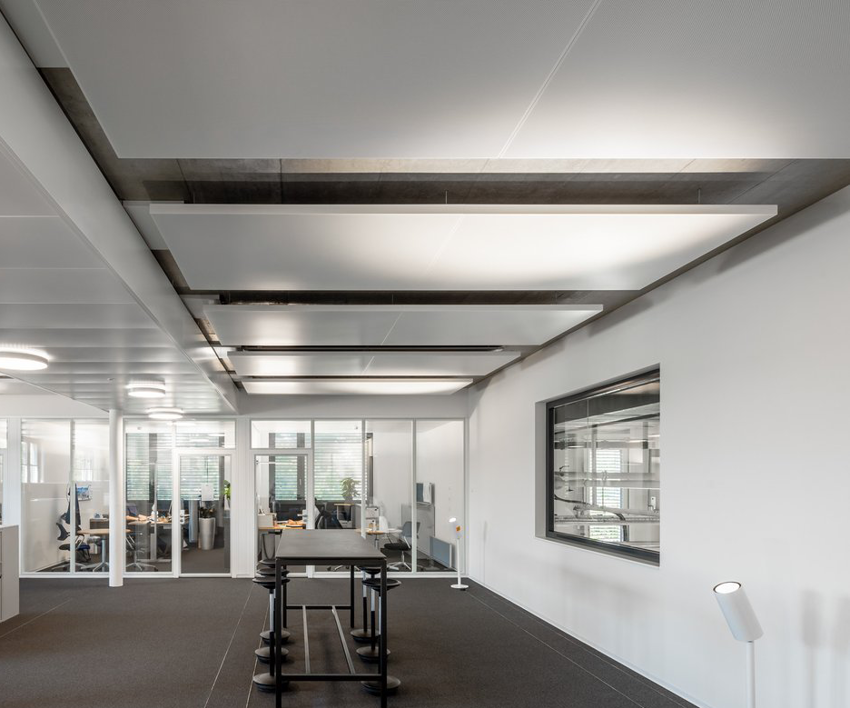
Mass storage and energy consumption
So, the above indicates that there are indoor climate products which can ensure a good indoor temperature in an energy efficient manner. In terms of products for cooling with mass connection, a climate ceiling for instance, may be run exclusively at night in free cooling mode. This is possible for most of the year, hot spells excluded. However, as energy can be stored by the building mass, the energy used throughout a day during a hot spell is considerably reduced as energy from the building mass can be utilised. This means that the COP* of the refrigeration unit is much higher at night than during the day. Increasing the COP of the refrigeration unit considerably reduces the electric portion of the refrigeration process. But as soon as it is possible to proceed with free cooling, no electrical energy is needed for refrigeration besides any pump output. This leads to a dramatic reduction in CO2 emissions.
* Coefficient of performance
Climate ceilings and indoor climate
Cooling or heating from the ceiling provides a good indoor climate in the room, given that the product is properly installed, commissioned and controlled. In the case of a heating solution, the heat emitted from the ceiling products warms objects and surfaces in the room, which radiate heat back into the space and create a comfortable indoor climate. The technique differs if it is a solution for cooling. The hot air rises to the ceiling where it is cooled by the ceiling product and falls back to the occupied zone of the room. No matter, the ceiling products create an even and comfortable indoor climate for people to feel good inside.
See our reference case, SXB in Berlin, Germany
Get familiar with our climate ceilings